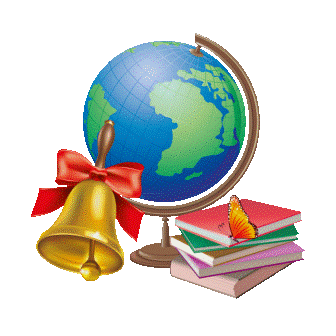|
Цели урока:
Практическая: активизация речевых
умений учащихся.
Развивающая: развитие мотивационной
сферы учащихся, интереса к языку и странам
изучаемого языка.
Образовательная: накопление знаний
о праздновании Пасхи в англоязычных странах.
Воспитательная: воспитание уважения
к культуре, традициям и обрядам других стран.
Задачи урока:
- Совершенствовать слухопроизносительные
навыки;
- Развивать способности адекватно реагировать на
реплику;
- Формировать речевые лексические навыки.
Оборудование:
- магнитофон и кассеты с песнями и музыкой;
- компьютер;
- проектор;
- карточки со словами для игры "Easter pictionary”;
- вырезанные из бумаги кролики;
- цветные карандаши и фломастеры;
- нарисованная корзина;
- бумажные яйца;
- банка с шоколадными яйцами;
- небольшие корзиночки для яиц;
- бумага, войлок, ленты и т.п. для украшения
корзиночек;
- небольшие печенья;
- глазурь для украшения печенья;
- призы.
Ход мероприятия
I.
Good afternoon, boys and girls! Good afternoon, dear guests!
II.
T: What season is it now? (spring)
T: What spring holidays in Russia and English-speaking countries
do you know?
(постепенно на экране
появляются названия праздников)
Russia |
English-speaking countries |
8th March – Women’s day |
17th March – St.Patrick’s day |
| |
March – Mother’s day |
Easter |
Easter |
1st April – April Fool’s day |
1st April – April Fool’s day |
1st May – May day |
1st Monday of May – May day |
9th May – Victory day |
|
T: What religious holiday do people celebrate in Russia and in
English-speaking countries? (Easter)
T: And today I’d like to invite you to our Easter workshop.
We’ll play games, make and decorate things.
T: When do we celebrate orthodox (православную) Easter
this year? Catholic (католическую) Easter?
T: Esater is a religious holiday. The name Easter comes from
Eostre, an ancient Anglo-Saxon goddess of spring.
III.
T: Listen to the poem and say what Easter symbols are.
P: Easter everywhere
Rabbits soft and cuddly
Baby chickens, too.
Easter eggs for baskets
White and pink and blue.
Easter cards of greeting,
Music in the air,
Lilies just to tell us
It’s Easter everywhere.
T: Well, what are Easter symbols? (rabbits or Easter bunnies, baby
chickens, coloured eggs, greeting cards, also cookies, sweets and Easter cake).
IV.
T: Let’s play a game "Easter pictionary”. Look at the
basket. There are cards with Easter objects written on them there. Take a paper, read the
word and draw it. Don’t say the word aloud. The children have to guess the word. A
person who guesses the word, gets a prize.
Words: a rabbit, a sweet, a carrot, an egg, a chocolate chicken,
beautiful cards and so on.
V.
T: Look at these greeting cards. What’s
the most popular animal – one of the images of Easter? (a rabbit)
T: Thousands of years ago a hare or a rabbit was a symbol of the
moon. Also Celtic people believed that the hare chased away the spirit of winter.
P: Bunnies
Bunnies are brown,
Bunnies are white,
Bunnies are always
An Easter delight.
Bunnies are cuddly,
The large and the small.
But I like the chocolate ones
The best of them all.
T: Let’s make our own Easter bunny. You have a cut out bunny.
Please, decorate it.
T: Well, let’s have a look at our bunnies. Which is the most
creative? Funny? Prittiest?
VI.
T: if you have a rabbit costume you may take part in an
easter parade in America or Great Britain.
Let’s have a short parade here in the classroom. Put on your masks
and parts of your costumes. Let’s walk around the classroom.
VII.
T: Look at the screen. What Easter image can you see? (an Easter
egg)
What do we do with the eggs on Easter eve? (dye and decorate them)
P1: People in Great Britain and America play different games with
eggs. Parents hide eggs for children to find. Some English children spend the Easter
morning hunting for eggs that the "Easter Bunny” has hidden from them. The child who
finds more eggs wins a prize.
P2: Egg-rolling is a traditional Easter pastime. People roll dyed
boiled eggs down a slope until they are cracked and broken.
P3: At the beginning of the 20th century we had the same
tradition in Russia, but it was lost after the revolution.
T: Where do people put eggs? (in the basket)
Let’s put the eggs in our drawn basket but with dyed eyes.
Take the egg, close your eyes and "put” the egg into the basket.
VIII.
T: And now we’re going to decorate your own baskets and fill
them with the eggs. But first look at this jar with little chocolate eggs. How many eggs
are there in the jar? Can you guess? Write the number on a piece of paper. After
decorating the baskets we’ll count the eggs.
The pupils decorate their baskets with paper, felt, ribbons and so on.
T: Well done. And now I put the eggs in your basket and you count
how many there are.
The winner gets a prize.
IX.
T:Look at the picture. Слайд №9 What else do
people eat on Easter? (cookies and Easter cakes)
In English-speaking countries you can buy hot cross buns. Children all
over the world chant hot cross buns.
P:
Hot Cross Buns, Hot Cross Buns.
One a penny, two a penny, Hot Cross Buns.
If you have no daughters, give them to your sons.
Hot Cross Buns, Hot Cross Buns."
T: They also decorate cookies. Let’s try to do it and treat our
guests.
X.
Children decorate the cookies, eat them and treat the guests.
T:
Well, that’s the end of our Easter workshop.
We wish you a Happy Easter!
|  З В О Н О К НА У Р О К
З В О Н О К НА У Р О К З В О Н О К НА У Р О К
З В О Н О К НА У Р О К